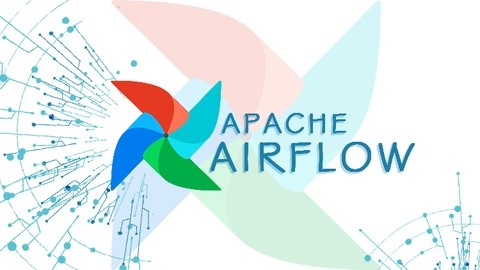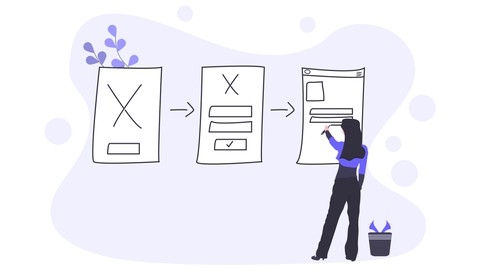Apache Airflow is a powerful open-source workflow management platform designed to orchestrate complex data pipelines.
It enables you to define, schedule, and monitor data processing tasks, making it essential for businesses leveraging data-driven decisions.
By learning Airflow, you can build robust data pipelines, automate repetitive tasks, and streamline your data workflows.
This can lead to increased efficiency, improved data quality, and faster insights.
Finding a good Apache Airflow course can be tricky.
There are plenty of options available, but you want a course that is both comprehensive and engaging, taught by experienced instructors, and tailored to your learning style and goals.
You want to learn the core concepts, build real-world pipelines, and explore advanced features like distributed execution and security.
For the best Apache Airflow course on Udemy overall, we recommend The Complete Hands-On Introduction to Apache Airflow.
This course provides a comprehensive introduction to Airflow, covering everything from setting up your environment to building complex pipelines.
You’ll learn about DAGs, operators, scheduling, monitoring, and more, all through hands-on exercises.
This makes it ideal for both beginners and those looking to strengthen their Airflow skills.
This is just one of the many great Apache Airflow courses available on Udemy.
Keep reading to discover more options, including courses focusing on specific Airflow features, using Airflow with other tools, and advanced topics like security and scalability.
The Complete Hands-On Introduction to Apache Airflow
You’ll start by getting comfortable with the development environment, understanding the core components like DAGs and Operators, and exploring the different architectures.
The course delves into the basics of Docker and its integration with Airflow, setting a strong foundation for practical implementation.
You’ll then dive into building your first data pipeline, utilizing the powerful concept of DAGs and exploring various Operators like BashOperator and PythonOperator.
You’ll learn about Sensors, which are crucial for data dependency management, and how to effectively interact with external systems using Hooks.
This section will equip you with the skills to schedule and run your data pipelines confidently.
Moving on to advanced features, you’ll explore the new Dataset-based scheduling, a powerful tool for tracking data dependencies and ensuring proper DAG execution.
The course then guides you through different executors like Sequential Executor, Local Executor, and Celery Executor, providing insights into optimizing task execution.
You’ll learn how to effectively monitor your tasks using Flower, a valuable tool for understanding workflow progress.
The course covers advanced concepts like SubDAGs and TaskGroups, allowing you to handle complex workflows with ease.
You’ll discover how to share data between tasks using XComs, enabling seamless communication within your DAG.
The course also explores conditional task execution through trigger rules, giving you granular control over workflow behavior.
To further enhance your skills, you’ll learn how to create Airflow plugins, enabling you to integrate powerful tools like Elasticsearch and PostgreSQL.
You’ll also develop your own custom hooks, expanding the capabilities of your Airflow environment.
Beyond the core curriculum, the course offers supplementary resources like blog posts and videos, covering advanced topics such as the DockerOperator, Kubernetes Executor, templating, and best practices.
This extensive support ensures you have access to a wealth of information to deepen your understanding of Airflow and its applications.
Apache Airflow: The Hands-On Guide
You’ll learn the fundamentals, build a real-world pipeline, and explore advanced concepts like distributed execution and security.
Starting with the core concepts of DAGs and operators, you’ll get hands-on with practical exercises, setting up your environment and installing Airflow.
The course then guides you through building a stock market pipeline, demonstrating the use of PythonOperator, DockerOperator, and PostgresOperator to fetch, process, and load data.
You’ll even learn how to integrate Spark and MinIO for data formatting and storage.
Beyond the basics, you’ll delve into scheduling, backfilling, and handling timezones.
You’ll master DAG organization and structure, learn how to handle failures, and write unit tests for your pipelines.
The course also covers advanced features like SubDAGs, Branching, and XCOMs, allowing you to build complex, sophisticated workflows.
The latter part of the course dives into distributed execution, teaching you how to scale Airflow with Celery Executors and Redis, as well as with Kubernetes Executors.
You’ll get hands-on experience setting up a Kubernetes cluster with Vagrant and Rancher, and even deploying Airflow on AWS EKS.
Finally, you’ll learn about monitoring and security, including setting up custom logging, configuring Elasticsearch, and implementing RBAC for secure access control.
You’ll also discover how to encrypt sensitive data with Fernet and rotate keys for enhanced protection.
This course offers a robust foundation in Apache Airflow, equipping you with the skills and knowledge to build, deploy, and manage complex data pipelines efficiently and securely.
Apache Airflow | A Real-Time & Hands-On Course on Airflow
This comprehensive course takes you on a journey from beginner to advanced, equipping you with the skills to design, build, and manage robust data pipelines using Apache Airflow.
You’ll start by understanding the power of Airflow compared to traditional scheduling methods, diving into core concepts like DAGs (Directed Acyclic Graphs) and Operators, the building blocks of your workflows.
The course emphasizes hands-on learning.
You’ll learn to install Airflow using Docker, a powerful containerization tool, ensuring a consistent environment for your projects.
You’ll explore the user interface, navigate directories and files, and write your first DAG files, defining the tasks and dependencies within your workflows.
As you progress, you’ll delve into advanced topics like Executors, which control how your tasks are executed.
You’ll explore different Executor types, including Sequential, Local, and Celery, gaining a deeper understanding of their strengths and weaknesses.
You’ll also learn about XComs and Variables, crucial for communication and data sharing between tasks within a workflow.
Beyond the basics, you’ll discover features like Airflow Sensors, which monitor external conditions and trigger tasks accordingly, and Backfill and Catchup, which allow you to execute past tasks and keep your data pipelines up-to-date.
Branching, another key feature, enables you to build dynamic workflows that adapt to different situations.
The course provides practical tools for optimizing your workflows.
You’ll learn to leverage the airflow.cfg file, the LatestOnlyOperator, and powerful data profiling capabilities for analyzing your data within Airflow.
You’ll gain the skills to create custom components like Operators, Sensors, and Hooks using Plugins, extending Airflow’s functionality to meet your unique requirements.
And, the course emphasizes best practices, ensuring you develop robust and maintainable workflows.
This comprehensive course offers a solid foundation in Apache Airflow, equipping you with the knowledge and skills to confidently build and manage sophisticated data pipelines for any project.
Apache Airflow on AWS EKS: The Hands-On Guide
You’ll delve into the fundamentals of Kubernetes, including namespaces and GitOps, laying the groundwork for seamless Airflow integration.
The course emphasizes practical hands-on learning.
You’ll create your own EKS cluster using GitOps, ensuring consistency and reliability in your deployments.
You’ll also configure a robust CI/CD pipeline with CodePipeline and ECR, automating your deployment process.
Beyond basic deployment, you’ll master advanced techniques like unit and integration testing for your Airflow DAGs, ensuring the quality and functionality of your workflows.
You’ll learn to expose the Airflow UI securely using AWS ALB Ingress and implement comprehensive logging solutions with AWS CloudWatch.
The course addresses sensitive data management through AWS Secret Manager, ensuring robust security for your Airflow environment.
Finally, you’ll build a production-ready environment with high availability for your Airflow UI.
You’ll explore using AWS RDS for data storage and implement DAG serialization for a stateless web server.
Apache Airflow: The Operators Guide
This course dives deep into the heart of Airflow, guiding you through its essential components and functionalities.
You’ll start by understanding the “BaseOperator” and its role in building complex workflows.
Key concepts like “task id,” “dag versioning,” and the intricacies of “start_date” are thoroughly explored, going beyond simple scheduling and into the realm of retries and email notifications.
You’ll get hands-on with setting up task dependencies, including the “wait for downstream tasks” feature, allowing you to orchestrate the flow of your workflow with precision.
The course also provides a comprehensive understanding of task prioritization and execution control through “trigger_rules.”
But the learning doesn’t stop there.
You’ll learn how to manage task expectations with “SLAs” and handle potential timeouts with callbacks, ensuring your workflows run smoothly and reliably.
The powerful “XCOMs” are introduced, allowing you to share data between tasks for seamless collaboration within your workflow.
You’ll be introduced to the most commonly used operators, including “PythonOperator,” “BashOperator,” and “PostgresOperator,” along with their practical applications.
You’ll discover how to leverage the “TaskFlow API” within the “PythonOperator” and pass dynamic parameters to the “PostgresOperator” for greater flexibility.
The course equips you with the skills to build conditional workflows using “BranchPythonOperator,” branching your workflows based on Python logic.
“BranchSQLOperator” and “BranchDateTimeOperator” are also explored, enabling you to create dynamic workflows based on database queries and specific times.
You’ll delve deeper into the intricacies of managing complex workflows with “SubDagOperator,” allowing you to break down your tasks into manageable sub-DAGs.
“TriggerDagRunOperator” and “ExternalTaskSensor” are explored, providing the tools to trigger other DAGs and wait for external tasks to complete.
The course also tackles scenarios where you might want to prevent unnecessary tasks from running with the “ShortCircuitOperator” or ensure only the most recent data is used with the “LatestOnlyOperator.”
You’ll gain a deeper understanding of the “DummyOperator” and “TaskGroups,” expanding your arsenal of Airflow tools.
This course offers a comprehensive exploration of Airflow, equipping you with the knowledge and skills to design, build, and manage robust workflows.
You’ll be ready to tackle complex data pipelines and automate tasks with confidence.
Apache Airflow using Google Cloud Composer: Introduction
You’ll start with the fundamentals, understanding why data pipelines are essential and how Apache Airflow helps you orchestrate them effectively.
The course dives into the core concepts of Directed Acyclic Graphs (DAGs) and operators, which form the foundation of your workflows.
You’ll explore the architecture of Apache Airflow, including both single-node and multi-node setups, and get hands-on with Google Cloud Composer.
This managed service provides a user-friendly environment for using Apache Airflow on Google Cloud Platform.
You’ll learn to provision and navigate this environment, a crucial skill for working with Airflow.
The course then shifts to practical skills.
You’ll create and submit Apache Airflow DAG programs, gaining valuable experience in building and deploying workflows.
You’ll explore templating functionalities and learn how to use variables to make your workflows more dynamic and adaptable.
The course also covers connections, which allow you to integrate your pipelines with external systems like databases and cloud storage services.
Moving beyond the basics, you’ll learn how to connect your Apache Airflow pipelines to Google Cloud BigQuery, a powerful data warehouse service.
You’ll gain experience in uploading data from Excel sheets and creating custom BigQuery tables.
You’ll also get a strong understanding of XCOM, a feature that enables communication between tasks within a DAG.
You’ll learn how to implement branching based on conditions, allowing you to create complex and flexible workflows.
The course also covers SubDAGs, a powerful technique for breaking down complex workflows into smaller, manageable units.
Beyond these core concepts, you’ll get a taste of advanced features like Service Level Agreements and Kubernetes integration.
The course includes practice tests to solidify your understanding and covers common interview questions to prepare you for potential job opportunities.
Finally, you’ll gain insights into the differences between Apache Airflow and other popular tools like Apache Beam and Spark.
This comprehensive course provides you with the knowledge and practical skills you need to confidently build and manage efficient data pipelines using Apache Airflow.
Master Airflow: Beginner to Advance with Project
You’ll start by understanding the core concepts of Airflow, learning about its benefits and how it fits into the broader picture of data processing.
Next, you’ll explore Docker, a crucial tool for containerizing applications, and learn how to set up a consistent and portable Airflow environment.
You’ll then learn hands-on how to install and configure Airflow using Docker, a skill essential for any data engineer working with Airflow.
The course guides you through Airflow’s user-friendly web interface, equipping you with the skills to manage and monitor your workflows.
You’ll then delve into the core components of Airflow, including DAGs (Directed Acyclic Graphs), tasks, and operators.
You’ll learn how to define tasks, connect them in a workflow, and use a variety of operators to perform specific actions, such as processing data, sending notifications, or interacting with external services.
The course then moves into real-world scenarios, showing you how to download data from web APIs and databases using the HttpOperator and HttpSensor.
You’ll also master file management with FileSensors and learn how to work with AWS connections.
You’ll learn the importance of communication between tasks within your workflow, exploring tools like XComm for exchanging information and the BranchOperator for creating conditional paths within your DAGs.
You’ll get practical experience with the BackFill feature, allowing you to rerun tasks for past time periods, ensuring you can analyze historical data effectively.
You’ll discover the power of CustomOperators, allowing you to build custom tasks tailored to your specific needs.
You’ll learn how to utilize Airflow’s MetaData feature for tracking information about your workflows, ensuring efficient management and visibility.
The course will then guide you through setting up parallel processing using the Celery Executor and Docker Compose, enabling you to scale your Airflow architecture for distributed workflows.
You’ll learn to use the SubDagOperator for organizing complex workflows and master the Fernet Key for ensuring secure data handling.
Finally, you’ll be challenged to apply your knowledge in a real-world project.
This practical experience allows you to build a tangible Airflow application and solidify your understanding of the concepts you’ve learned.
This course provides a robust foundation in Airflow, empowering you to design, build, and manage complex data pipelines efficiently.
Apache Airflow Bootcamp: Hands-On Workflow Automation
You’ll start by gaining a solid understanding of Airflow’s architecture and common terminology, setting up your development environment using WSL and Winscp.
The course guides you through installing Airflow and configuring it to connect to Postgres using pgAdmin, equipping you with the foundation to build robust and scalable workflows.
You’ll learn to navigate Airflow’s user interface, exploring features like DAGs, tasks, and operators.
The course then dives into the core of Airflow by teaching you how to create DAGs using various methods, including defining tasks, passing parameters, and scheduling workflows.
You’ll gain proficiency in utilizing a wide range of operators like BashOperator, PostgresOperator, PythonOperator, and SlackWebhookOperator.
The course also covers essential concepts like sensors, allowing you to monitor external events and trigger tasks dynamically.
You’ll delve deeper into the complexities of building advanced workflows by exploring branching and DAG dependencies, which enable you to create complex pipelines with multiple paths and dependencies.
The course doesn’t shy away from advanced concepts like Xcoms and callbacks, empowering you to share data between tasks and manage errors effectively.
Furthermore, you’ll learn about resource management features like pools and task priorities, which allow you to optimize the execution of your workflows.
The course emphasizes understanding executors like Sequential and Local, crucial for ensuring efficient and scalable workflow execution.
The syllabus guides you through Airflow’s robust role-based access control system, enabling you to manage user permissions and access levels for different users and roles.
You’ll also learn how to implement Service Level Agreements (SLAs) and monitor task performance, ensuring efficient and reliable workflow operation.
Finally, you’ll explore advanced concepts like handling zombie tasks and addressing errors like SIGTERM and SIGKILL.
Practical Apache Airflow
This course goes beyond surface-level understanding and delves into the practical details you need to become proficient in Apache Airflow.
You’ll begin by grasping the core concepts of Airflow, including Directed Acyclic Graphs (DAGs) and how they define your pipelines.
The course doesn’t shy away from real-world applications, guiding you through retrieving data from file systems, merging and aggregating data with Pandas, and establishing connections to databases.
You’ll gain hands-on experience setting up and configuring Airflow, covering essential aspects like environment variable setup and encryption for secure connections.
Throughout the course, you’ll uncover various facets of Airflow’s architecture and configuration crucial for building and maintaining robust pipelines.
You’ll learn about Airflow’s powerful features, including dynamic flow patterns, task branching, and passing variables between tasks.
You’ll also explore the benefits of utilizing Airflow’s REST APIs for programmatically interacting with your pipelines and discover how to set up authentication for secure access.
The course doesn’t shy away from advanced topics like logging to cloud storage (like S3) and using Docker to containerize your Airflow environment for portability and scalability.
You’ll gain insights into service level agreements (SLAs) and how to implement them in your Airflow pipelines to ensure timely and reliable execution of your tasks.
Finally, you’ll develop a solid understanding of Airflow’s command-line interface and its various utilities, equipping you with the tools to manage and troubleshoot your pipelines effectively.
Learn Airflow v2 in an hour
This course sets out to teach you the fundamentals of Apache Airflow v2 within a single hour, an ambitious goal indeed.
However, the syllabus provides a solid foundation for understanding core concepts and getting started.
You’ll begin by setting up your environment and learning to interact with containers, which are the foundation of Airflow workflows.
This hands-on approach quickly gets you into the heart of Airflow, where you’ll dive into writing workflows, the core functionality of the system.
You’ll learn to define and execute Directed Acyclic Graphs (DAGs), visually representing and managing your data processing tasks.
The course then covers essential concepts like backfills and schedule intervals, crucial for effectively managing workflow execution.
You’ll gain practical experience with key operators:
-
Python Operator: Executes Python code within your workflows.
-
Branch Operator: Allows for conditional branching in your workflows.
-
Postgres Operator: Facilitates interaction with a Postgres database.
While the one-hour timeframe is tight, this course offers a focused and practical introduction to Apache Airflow v2, laying the groundwork for further exploration and development.










